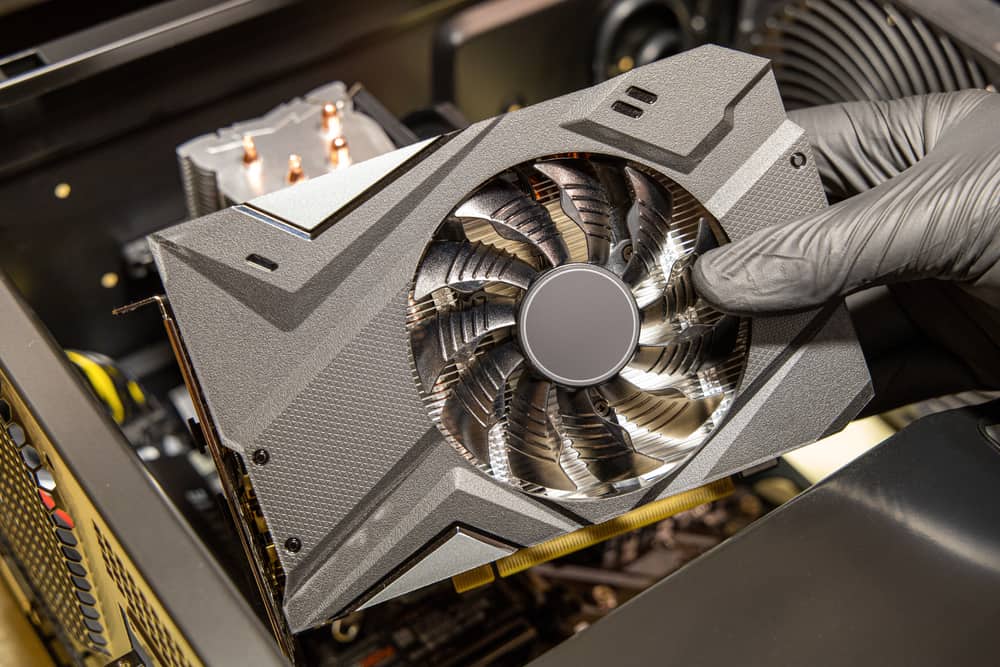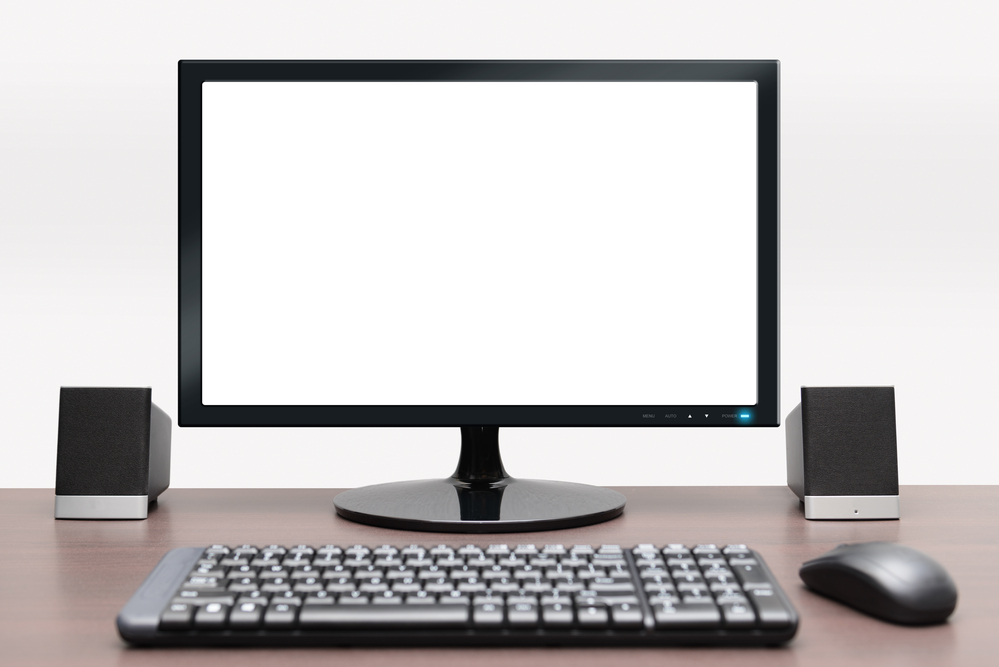
A buzzing sound from your computer can be alarming as it may indicate a serious hardware issue.
However, not all buzzing sounds are serious, and you can eliminate them through simple methods.
Most of these methods don’t require specific technical skills, but if you haven’t opened your computer before, you may want to leave it to a technician.
We take a look at all the possible factors that can cause a buzzing sound in a computer.
Computer Buzzing Sound (Causes, Fixes)
1. Physical Issues

In most cases, the buzzing sounds from your computer don’t have a serious root cause, such as hardware breaking or software failing.
That’s particularly the case if you don’t have a pre-built PC or haven’t recently opened the case to fix or replace a component.
Even if you have a pre-built computer or a laptop you’ve never opened, you may experience these sounds after a while.
That’s because PCs have vibrating parts that can affect other components.
These issues range from a component coming loose, a wire or cable rubbing against another component, or a screw falling out.
Even if the vibration is minor, it can produce buzzing sounds that can be frustrating or worrying.
That’s why you should first check the hardware and all physical connections.
If the rubber feet under the laptop or PC case have come loose or been separated, the bottom side will be touching the desk and cause vibrations.
You could try putting the laptop or the case on a soft surface, like a piece of cloth, to see if the sound goes away.
If it does, replacing the rubber feet will help stop the buzz.
Sometimes the issue is as simple as a misaligned case panel caused by loose screws.
You can ensure this is not the issue by touching and gently pressing the case panel and checking if the buzzing stops.
If it does, tighten the screws and realign the case panel to prevent it from rattling.
Next, you should check the innards.
Turn off your computer, remove all the cables and peripherals, open its case, and check everything carefully.
Move or tilt the case gently and listen for any sounds indicating a loose screw moving or falling.
Look for loose wires or components that aren’t tightly connected to the motherboard.
Even if the screw hasn’t come off, it can cause the case panel to come loose and rattle.
Listen carefully and follow the noise until you find the source.
Don’t dismiss even the slightest signs because a minor movement can cause noises inside the computer due to the metal parts and many wires and cables running through the components.
If you see any loose wires, organize and secure them in a place away from the fans or other metal parts.
These loose screws can also be inside other components, such as the hard drive.
Inspect the wires connecting the CPU, GPU, hard drive, PSU, and other components to the motherboard.
If a component isn’t tightly secured to the motherboard or the case panel, you can fill the space using rubber foam.
If you hear the buzzing sounds intermittently, the real cause is likely to be physical.
That’s because the fans run intermittently, and you can’t hear any sound when they don’t work.
When the fan runs, they cause the loose component to vibrate and produce a buzzing sound.
2. Electrical Buzzing

The type of buzzing can help you determine where it is coming from.
For example, if the buzzing comes with hums, rattles, whirring, or clicking sounds, the culprit may be different from when the buzzing sounds like an electric piece going bad.
Here are the main causes of electrical buzzes:
A. Electric Shorts
Electrical buzzing can indicate electric shorts, which can be dangerous, and needs to be taken care of quickly.
Inspect the PC and see if there are any sparks.
Look for bare wires touching metal parts or other wires.
In such cases, you must be super cautious because the electricity running through the PC components can be dangerous and cause electric shocks.
If you don’t have the technical know-how, you may want to leave it to a skillful technician.
Opening the PC case can also void your warranty, and you may end up damaging your PC components.
If you see any signs of electric shorts or damage, turn off your PC immediately and remove the root cause.
Replace faulty wires or components and make sure the electric short is gone.
B. Coil Whine
Coil whine is very common in electronics.
Also referred to as electromagnetically excited acoustic noise, it’s a high-pitched buzzing sound caused by different issues.
The primary factor is the coils inside electronic components that are responsible for inducing electric current and that make a buzzing sound when they vibrate.
This vibration can be due to old age or the coil not being tightly secured to the main board of the component.
The primary PC component that faces coil whine is the GPU, but you can also experience it in the laptop’s power adaptor.
Coil whine in the graphics card is more noticeable when the PC is under load, like when you’re doing GPU-intensive tasks.
But you may also experience it randomly without any apparent causes.
Unfortunately, if you’re convinced that the noise is coil whine, there’s nothing you can do about it.
It’s not fixable, and the manufacturers don’t include it in their warranty coverage.
You just have to put up with it or replace the component.
3. GPU And CPU Overload

Graphics cards are noisy components, especially under high load.
So, the buzzing could come from the graphics card if you perform GPU-intensive tasks as they get hot, and the fans have to run faster to cool down the PC.
To ensure the real cause is the graphics card, listen to the noise while doing an intensive task like playing games and see if the noise increases.
After making sure it’s the GPU, try reducing the load on the GPU and see if it helps.
Stop playing games on fancy settings and reduce the game settings to lighten the load.
You could also turn on VSync.
VSync, or other proprietary syncing technologies like Nvidia’s G-Sync and AMD’s FreeSync, adapt the game’s framerate and the screen’s refresh rate.
As a result, they prevent input lags and stutters and reduce the load on the GPU to deliver smooth images.
When you play heavy games that tax the GPU, they may end up damaging the graphics card drivers.
So, it’s always crucial to have the latest driver versions installed.
Performing resource-intensive tasks, such as playing games and video editing, can also burden the CPU.
While you can’t avoid using CPU and GPU resources, you can lighten the load on the CPU by avoiding overclocking and multitasking.
Close all background apps and web browsers when performing intensive tasks.
In addition, some games may use CPU resources instead of GPU, which you can resolve by tweaking in-game settings and updating your graphics card drivers.
Finally, you can ease the burden on the CPU by removing unwanted files and folders, temporary files, and browser caches.
These files take up extra space on your hard drive and slow down the CPU.
Viruses and malware can also work up your CPU, raising its workload and temperature.
So, while you may think the buzzing sounds from your PC have nothing to do with viruses, they can be a highly likely cause.
That’s why you should always ensure your computer is free of viruses, malware, or bloatware by practicing cyber hygiene and installing a reliable antivirus tool.
Run a system scan and remove any detected threats to see if the noise stops.
4. PSU

The power supply unit is another component widely responsible for buzzing noises inside the PC.
The main cause of buzzing from the PSU can include many factors, including coil whine, failing fan, or loose wires.
As a result, you need to inspect the PSU carefully to isolate the cause.
When physically checking the PC components, pay extra attention to the PSU because a faulty PSU can damage other PC components.
Fortunately, you can easily find out where the noise comes from by listening intently.
If the PSU fan is clogged or damaged, it can cause excessive noise.
You can lower the noise by cleaning the PSU fans, but you must never open the unit to clean its fans since it’s dangerous and you may hurt yourself.
Compressed air can blow out the dust and make the fan move faster.
However, you may not be able to find the PSU defect easily, so the best solution is to replace the PSU with a high-quality one.
5. CD/DVD Drive

Although computers don’t have many noise-producing components, CD/DVD drives are among the noisiest ones.
Since DVD drives have moving parts and spinning bearings, they’re subject to wear and tear.
Optical drives have special lenses that allow them to read data.
If you smoke near your computer or it’s near a place like a kitchen with smoke and fumes, the lens may have dirt buildup.
As a result, they can develop buzzing noises that are hard or impossible to stop.
Try cleaning the lens and see if it helps with the buzz.
Low-quality disks can also cause buzzing or screeching noises since they tend to get deformed easily, and the driver can’t read them.
Have you opened the case recently or upgraded your PC?
If yes, then the chances are high that the drive has lost its alignment with the case and is resonating against the metal parts of the case.
You can make sure by removing it from the case and operating it outside the case on a padded area.
If the noise persists, it has internal issues.
Otherwise, you can solve the issue by reseating the drive or using rubber foam.
Next, you should check if the internal parts of the drive are failing.
Try different disks and see if the noise persists, in which case you’ll need to replace the drive or use an external optical drive.
That said, you may not even need a new drive since you can copy your data to a thumb drive or an external hard drive, which is why many new computers have done away with CD drives.
6. Hard Disk

One of the serious issues that may be concerning is hard disk failure.
Computer noises can come from a hard disk because it has moving platters that read and write data by spinning.
As a result, humming noises are natural and indicate the smooth movement of hard drive platters.
However, low-pitched buzzing sounds with clicking or grinding noises are alarming.
Look for other signs of hard drive failure, such as BSOD or crashes and screen freezes.
You may also want to use third-party apps or Windows SMART test via the Command Prompt to check your hard disk health.
Depending on the result of the test, you may need to replace the hard drive or take steps to prevent its failure.
Whatever you do, it’s essential to back up your data in case your hard drive fails.
And it’s also recommended to replace your mechanical hard drive with an SSD.
7. Speakers

The buzzing from your PC may not be due to an internal hardware issue.
Rather, it may come from the speakers caused by software-related problems.
And if the physical inspection shows that the noise comes from the speakers, you need to consider the following factors:
A. Hardware And Connections
Speakers have moving parts that can fail over time.
So, the buzzing noises may be due to physical damage or failure, which is easy to detect by replacing the speakers with another sound output device.
A faulty audio jack is also a common cause of buzzing sounds.
You can check your current speakers on another device or output jack and see if the buzz goes away.
If the audio jack is faulty, you may need to get it repaired by a technician or use another port to connect your speakers.
B. Change Audio Settings
You may use some audio settings to enhance the sound quality, which may lead to noise and buzzes if your speakers can’t support these settings.
One of these features is Audio Enhancement, which involves a wide range of features that can boost your audio quality.
Depending on your device, you may get a bass boost, room correction, virtual surround, equalizers, etc.
Disabling these features may help remove the speaker buzz.
Here’s how to do it:
- Right-click the Start button and go to Settings.
- Select System, and in the new window, click on Sound.
- Under Output, click on Device Properties and select Additional device properties on the right side of the new window.
- Click on the Enhancements tab and select Disable all enhancements.
- While in the audio settings window, you can tweak another setting to see if it helps.
- In the audio settings window, look for Advanced sound options, which is the last option.
- Click on App volume and device preferences and click Reset.
C. Update Audio Drivers
Hardware drivers should always be updated to ensure they’re bug-free and operate properly.
Outdated drivers can cause miscommunication between the hardware and software, causing many issues.
Even if updating the driver doesn’t eliminate the buzzing sound, it helps your audio devices run much better.
To update your audio drivers, go to Device Manager and find Audio inputs and outputs.
Expand the menu, right-click on your sound output device, and select Update Driver.
Select Search automatically for drivers and follow the on-screen prompts to finish updating.
D. Disable Your Audio Device
Another way to reset your audio settings is to disable your audio device and reenable it.
This re-initialization may help remove the buzzing sound by eliminating glitches.
Here’s how to do it:
Open a Run box by hitting the Windows key and R together.
Type in mmsys.cpl and press Ok.
Right-click your speaker and select Disable.
Right-click the device again and select Enable this time.
8. Fans

Although the fans don’t normally make buzzing sounds, you should consider them a possible culprit, especially if the above solutions haven’t worked.
The buzzing may come from fan blades hitting or rubbing against other components or the case panel, so you should look for these signs when physically inspecting the hardware.
In addition, the fan may be failing due to old age or electricity-related issues.
You could use fan-controlling software to stop your fans one by one and listen for the buzzing sound.
If the noise stops when the fan isn’t working, you’ve found the culprit.
You may also want to keep track of your PC temps and see if the fans are working extra to keep the PC cool.
Look for factors that raise your CPU temps and eliminate them to cool down your PC.
The most important component you should check is the CPU and GPU’s heatsink and thermal paste.
You should replace them if they’ve gone bad or come off because they’re essential cooling solutions.
Keep your computer dust-free to prevent dust buildup from clogging the fans and raising the temps.
Stop overclocking and multitasking to avoid burdening your PC and raising its temps.
Avoid blocking airflow by keeping the PC vents clean and unobstructed and placing the PC in a well-ventilated area.
If lowering the PC temps doesn’t help reduce fan noise, the fan bearings have probably gone bad.
You may be able to reduce the noise by applying some PC fan lube.
But if the fan bearings have started to go bad, it’s only a matter of time before the entire fan fails.
So, it’s better to replace the fan before it causes more problems.
NEXT: Ethernet Vs. Phone Jack (What’s The Difference?)

























